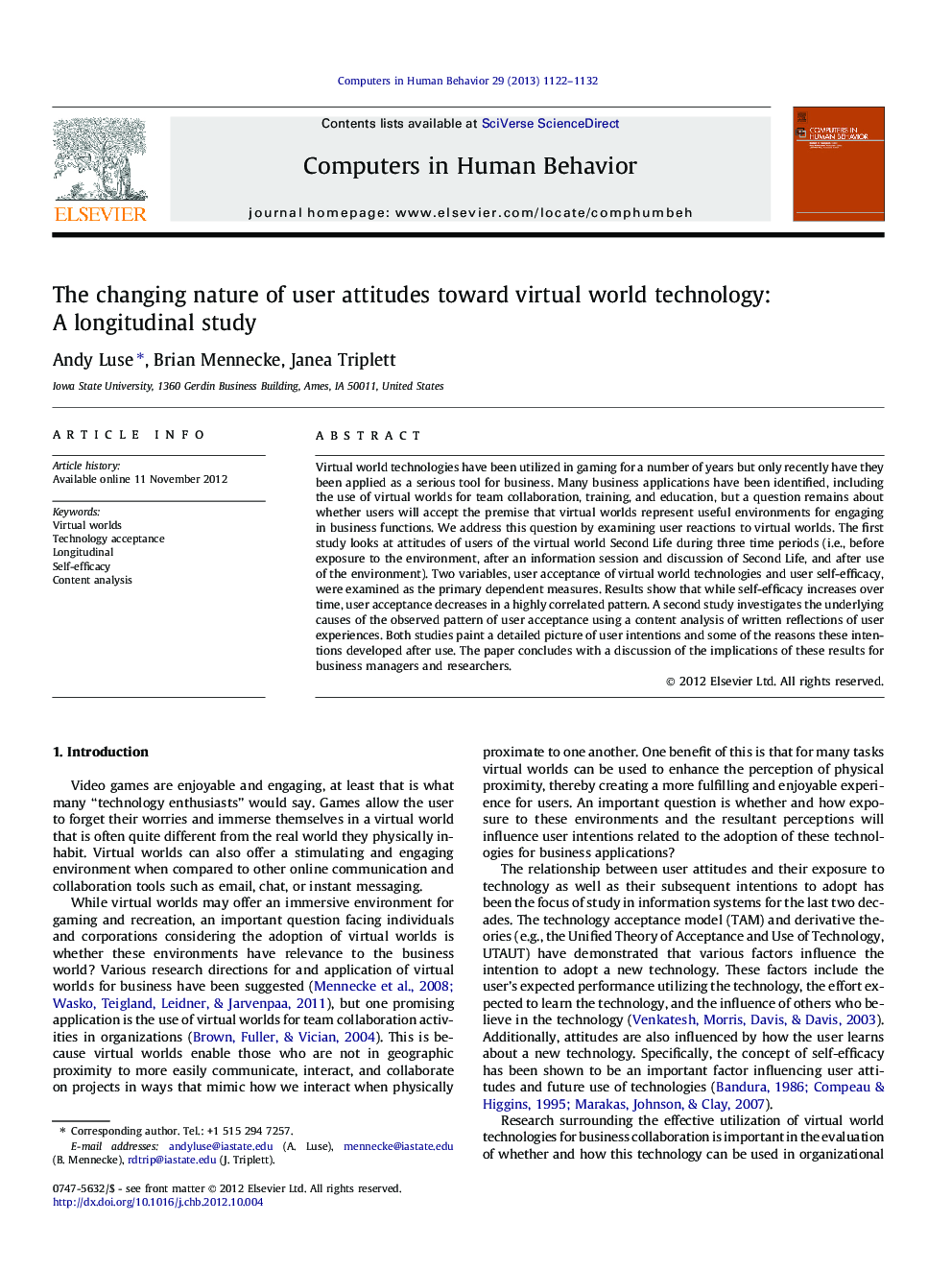| Article ID | Journal | Published Year | Pages | File Type |
|---|---|---|---|---|
| 351247 | Computers in Human Behavior | 2013 | 11 Pages |
Virtual world technologies have been utilized in gaming for a number of years but only recently have they been applied as a serious tool for business. Many business applications have been identified, including the use of virtual worlds for team collaboration, training, and education, but a question remains about whether users will accept the premise that virtual worlds represent useful environments for engaging in business functions. We address this question by examining user reactions to virtual worlds. The first study looks at attitudes of users of the virtual world Second Life during three time periods (i.e., before exposure to the environment, after an information session and discussion of Second Life, and after use of the environment). Two variables, user acceptance of virtual world technologies and user self-efficacy, were examined as the primary dependent measures. Results show that while self-efficacy increases over time, user acceptance decreases in a highly correlated pattern. A second study investigates the underlying causes of the observed pattern of user acceptance using a content analysis of written reflections of user experiences. Both studies paint a detailed picture of user intentions and some of the reasons these intentions developed after use. The paper concludes with a discussion of the implications of these results for business managers and researchers.
• Explore user attitudes towards the use of virtual world environments longitudinally. • Investigate self-efficacy and technological acceptance of virtual worlds. • Growth curve models are used to better understand the longitudinal aspects. • Self-efficacy increases over time while intent to use declines. • Content analysis explains why individuals prefer traditional communication methods.
